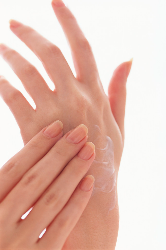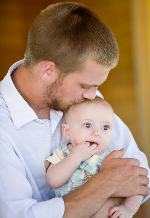A couple summers ago, our family went parasailing in Maui. Excited to check this long-anticipated item off my bucket list, I was revved and ready to go. It caught me completely off-guard, then, when, as the boat left the harbor, seeing the sky dotted with people in parachutes, I was flooded with anxiety.
There can be a thin line between anxiety and excitement. I reminded myself of this, trying to reframe the anxiety and calm and contain it. It didn’t help. Anxiety mounted. No question—I wasn’t excited. I was increasingly anxious and afraid, verging on terrified.
I struggled with a dilemma. Here was a chance to do something I’d always wanted to do in a gorgeous location. And yet I was so flooded with anxiety that if I parasailed, it would be gutting it out, not at all the pleasurable, expansive experience I had always imagined. My point in parasailing was fun, not an exercise in mastering terror. So I was stuck squarely in a double-bind: miss out on a rare opportunity or do the parasailing and feel miserable levels of fear.
What I needed was some clever third alternative—a way out of the lose-lose proposition that had me frantically obsessing between two “impossible” options. Remembering body awareness techniques as often helpful with anxiety, I decided to try them on myself.
I asked and answered the basic questions. “Where in your body is the anxiety and how intense is it, 1-10?” It was in my torso, a highly unpleasant #9 intensity. I stopped fighting the anxiety, just letting it be as I observed it. When I stopped fighting it, trying to get rid of it, it actually decreased a little but was still way too unpleasant to allow enjoying the parasailing.
Then I asked the basic, “Is there any place in your body that isn’t as anxious as the strong feelings in your torso?” Interesting. I noticed what I hadn’t noticed before. (Anxiety, quite compelling, can take over our awareness.) My seat against the boat’s bench and my feet against the floor actually felt steady and calm. Shifting awareness from my highly anxious torso to my calm, steady feet and seat, I enjoyed a moment of peace and calm.
Finally, in a technique called “titrating,” I went back and forth between the anxiety in my torso and the calm, steadiness in my feet and seat. Letting my awareness linger in my torso with its anxiety… then shifting my awareness to my feet and seat, lingering in the calmer feelings. Back and forth, not trying to manipulate or change the feelings, just letting them be. Just seeing what would happen.
What happened was my anxiety went way down. It doesn’t always work this quickly and completely but in that instance on that boat it did work… neatly and completely. I think I only shifted awareness once or twice between the high anxiety in my torso and the calm, steady sensation in my lower body before I was good to go. Something about realizing that there was more to me in that moment than the intense anxiety—that my experience was more than or bigger than the anxiety that was threatening to overwhelm me… that I could still feel calm and steady even while feeling highly anxious… allowed me to balance out, contain the anxiety, and calm down. Anxiety and fear dissipated, I was freed up to enjoy the excitement of parasailing over Maui’s dazzling Pacific Ocean.







